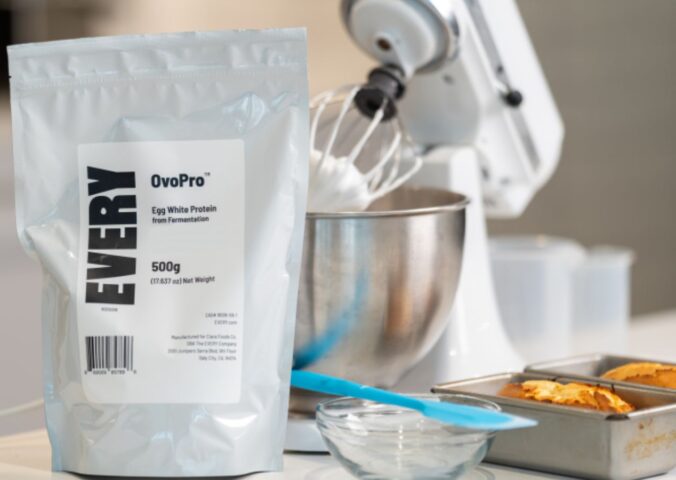Chewing gum is not as popular as it used to be. For many of us, the chewable candy was mostly used as a post-lunch breath freshener during the working day. But no longer.
Sales dropped significantly during the early days of the COVID-19 pandemic alongside decreased socializing and increased mask-wearing. They still haven’t recovered.
AP News recently reported that while chewing gum sales have begun to bounce back a little, growth remains very slow, with an increase of just one percent in the US last year (For context, gross US gum sales from 2023 were 32 percent fewer than 2018).
Globally, the story is much the same. Worldwide sales went up by five percent in 2023 to more than USD $16 billion, but that total is still 10 percent lower than it was back in 2018.
While the pandemic is irrefutably still affecting many people, the World Health Organization (WHO) notes that the “global emergency” it caused has at least paused, and socializing, commuting, and working – while irrevocably changed – are happening once again.
But people have still not returned to buying chewing gum as they once did, and the reasons are not quite as simple as economic post-pandemic malaise.

When was chewing gum invented?
Chewing gum sales might be falling right now, but our shared history with the chewy food goes back a long way. Chewing gum is thought to have evolved simultaneously and independently across different early civilizations during the Neolithic period.
A chewing gum-like substance called mastiche – derived from the bark of the mastic tree – was enjoyed by the Ancient Greeks, while actual physical evidence of chewed birch bark tar from around 5,000 years ago was found in western Finland, complete with tooth prints.
Archaeologist Jennifer P. Mathews told Smithsonian Magazine that chewing gum has been present on the American continent for hundreds of years as chicle – the resin of the evergreen sapodilla tree, found in southern Mexico and Central America.
The Mayans and the Aztecs collected this resin to make a chewable substance, which they recognized freshened breath, quenched thirst, and temporarily satiated hunger, three of the main marketing points of modern gum. Interestingly, the Aztecs also viewed the public chewing of gum as socially unacceptable, a cultural attitude echoed in the modern world.
More recently, Northern Native American cultures chewed spruce tree resin, something that European colonizers were quick to take up, appropriate, and capitalize on in the early 19th century, resulting in the first-ever commercial gum: The State of Maine Pure Spruce Gum.
Modern chewing gum gained global popularity when it was supplied to American GIs during World War II and after they traded with locals when stationed overseas. It enjoyed popularity as a symbol of rebellion from the late 1950s, which arguably continued until sales first began to decline in the early 2000s.
Why are people buying less chewing gum now?
As noted above, gum was decreasing in popularity long before 2020. Between 2010 and 2014, US-based gum sales fell 11 percent amid changing cultural attitudes and increased competition. However, the pandemic undoubtedly fast-tracked its plummeting sales.
The decisive popping of chewing gum’s bubble over the last few years is likely due to a combination of intersecting factors, undoubtedly including the impact of the pandemic on socializing, but also extending to people’s now-altered spending habits in the “new normal.”
For example, COVID-19 accelerated a global shift towards online shopping. Simultaneously, around 38 percent of Americans have decreased the amount they spent on impulse purchases. Though impulse buys are commonplace online, too, supermarket layouts encourage last-minute purchases by the checkouts, which digital consumers are bypassing.
Chewing gum is notably one of the most common impulse buys. In fact, around 65 percent of all gum sales are reported as impulse buys by industry leader Mars Wrigley. (If you think of your local grocery store, you can likely picture the shelves of gum by the cashier.)
Other factors in diminished gum sales include growing numbers of people more closely observing their consumption of refined sugar, and a simultaneously increasing wariness of the artificial sweeteners which so frequently replace it in gum and other confectionery.
Another health concern is plastic, which consumers are also increasingly conscious of. Many varieties of chewing gum are still made using polyvinyl acetate (PVA) or polyethylene (PE), which can be found in glue, tape, plastic bags, and bottles as well as gum.
How chewing gum affects health and the environment

Both PVA and PE can take hundreds of years to decompose and are considered harmful to the environment. It has been estimated that the average person ingests around one credit card’s worth of plastic per week, or 50 carrier bags’ worth in a year.
Many people are also concerned about the environmental – and aesthetic – impact of gum as litter, and the charity Keep Britain Tidy estimates that 87 percent of UK streets are stained with discarded pieces. It costs approximately GBP £7 million (over $8.8 million) per year to clean up. A single piece costs just three pence to produce but 10 pence to remove.
All sales, importation, and distribution of gum have been banned in Singapore for over 30 years now for this very reason, and some argue that the same restrictions should be introduced elsewhere. In 2021, the UK government announced a litter-picking scheme led by Keep Britain Tidy and funded by gum manufacturers to try and tackle the issue.
“The stains of discarded chewing gum are a blight on our communities, spoiling our streets and wasting millions of pounds of taxpayers’ money,” noted former Environment Minister Rebecca Plow in a government statement about the scheme.
What are the benefits of chewing gum?
Many major manufacturers are abandoning the chewing gum market altogether in response to ailing sales. In 2022, Mondelez International sold its US, Canadian, and European brands, while Mondelez has said that it will likely shift resources towards more profitable sectors.
The Ferrara Candy Co, which has been producing the previously ubiquitous Super Bubble and Fruit Stripe gums for over 50 years, recently announced that it had quietly ceased production of those brands in 2022. Spokesperson Brian Camen told Food Dive that the decision was made after considering consumer preferences, patterns, and brand trends.
The remaining major brands are searching for a fresh way to reach new consumers, and Mars Inc. – owners of the now 133-year-old Wrigley company – is now promoting its top sellers as tools for mental well-being, relieving stress, and aiding concentration.
Interestingly, this is something that many people already use gum for, including autistic folks who use the repetition of chewing as a form of stimming, and some with ADHD who chew gum to aid concentration. More broadly, there is a growing body of evidence that suggests gum can reduce anxiety and stress while aiding attentiveness.
From a marketing angle, promoting gum as a wellness tool is also nothing new. In fact, Wrigley’s used a similar tactic in 1916, encouraging consumers to chew gum to “steady your stomach and nerves,” or when work begins to “drag.”
Is there healthy and sustainable gum?
The global health and wellness industry itself is growing rapidly as more emphasis is placed on the concept of lifestyle as preventative medicine. A release by the nonprofit The Global Wellness Institute noted record profits for the sector in 2023 at $5.6 trillion, and forecast considerable growth in the form of $8.5 trillion by 2027.
Outside of the major brands such as Mars Wrigley, there are already many smaller companies producing health and environmentally conscious products free from sugar, plastic, and non-vegan ingredients. These include True Gum, Milliways, Nuud, and Chewsy.






